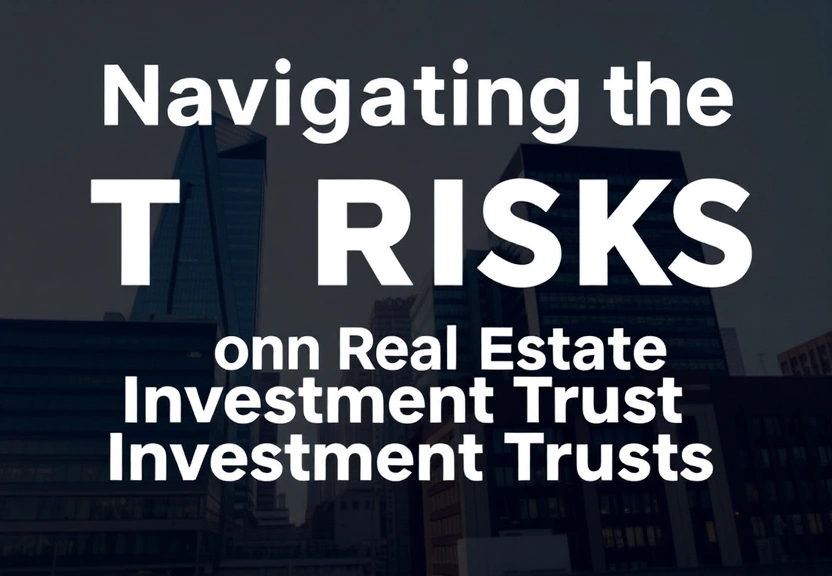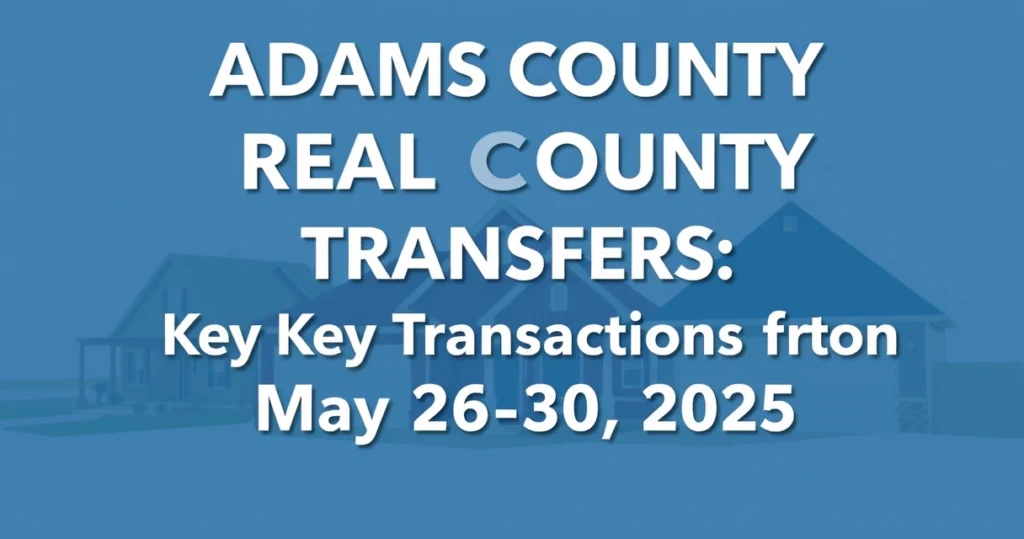Navigating the Top Five Risks Affecting Real Estate Investment Trusts
As the real estate investment trust (REIT) landscape evolves, it becomes increasingly vital for stakeholders to grasp the various risks that can impact their investments. Understanding these risks is not just about safeguarding investments; it’s also about identifying opportunities within the complexities of the market. In this article, we will delve into the top five risks affecting REITs, equipping stakeholders with strategies for effective investment navigation.

Real estate investment trusts serve as a bridge between real estate ownership and stock market investment, enabling individuals to invest in large-scale, income-producing real estate without having to buy properties directly. However, as with any investment, there are risks involved. From market fluctuations to regulatory changes, these risks can significantly impact the performance of REITs, making it essential for investors to stay informed and proactive.
1. Market Volatility
Market volatility is one of the most significant risks affecting REITs. The real estate market is inherently cyclical, influenced by economic factors such as interest rates, employment rates, and consumer confidence. A downturn in the economy can lead to decreased property values, reduced rental income, and ultimately, lower dividends for investors.
Understanding Market Cycles
Investors must understand that real estate markets experience cycles—expansion, peak, contraction, and trough. Each phase of the cycle presents unique challenges and opportunities for REIT investors. During a contraction phase, for instance, property demand may decrease, leading to higher vacancy rates, which can adversely affect REIT performance.
- Expansion Phase: Increased demand for properties and rising rental income.
- Peak Phase: Property prices are at their highest; potential overvaluation occurs.
- Contraction Phase: Economic slowdown leads to declining demand and rising vacancies.
- Trough Phase: Lowest point in the cycle; potential opportunities for investment arise.
2. Interest Rate Fluctuations
Interest rates play a pivotal role in the real estate market. When interest rates rise, borrowing costs increase, which can lead to decreased demand for real estate investments. Higher rates may also pressure existing REITs to pay more on their debt, impacting profitability and potentially reducing dividends.
Strategies for Mitigating Interest Rate Risks
Investors can adopt several strategies to mitigate the risks associated with interest rate fluctuations:
- Invest in Floating Rate Debt: Consider REITs that utilize floating-rate debt instruments, which can benefit from rising interest rates.
- Diversify Portfolio: Maintain a diversified portfolio to spread risk across different asset classes and property types.
- Monitor Economic Indicators: Stay informed about economic trends that may signal impending interest rate changes.
3. Regulatory Risks
Regulatory changes can significantly impact the operational landscape for REITs. Changes in tax law, zoning regulations, and environmental policies can affect how REITs operate and their overall profitability. For instance, tax reforms that alter how REITs are taxed could lead to reduced cash flows and diminished returns for shareholders.
Navigating Regulatory Changes
To navigate regulatory risks effectively, stakeholders should:
- Stay Informed: Keep abreast of legislative changes that may impact the real estate sector.
- Engage with Industry Associations: Participate in industry groups that provide insights on regulatory developments.
- Consult Legal Experts: Work with legal advisors to ensure compliance with new regulations.
4. Property-Specific Risks
Each property within a REIT’s portfolio can come with its own set of risks. Factors such as location, property age, and management quality can significantly influence a property’s performance. For example, a property in a declining neighborhood may experience lower occupancy rates and reduced rental income, adversely affecting the REIT’s overall performance.
Assessing Property Risks
Investors should conduct thorough due diligence on the properties held by a REIT. Key areas to evaluate include:
- Location Analysis: Assess the economic and demographic trends in the area surrounding the property.
- Property Condition: Evaluate the physical condition and age of the property.
- Management Quality: Review the management team’s track record and operational strategy.
5. Competition and Market Saturation
As more investors enter the REIT market, competition for quality properties can drive prices up, leading to potential overvaluation. Additionally, saturation in specific markets can result in increased vacancies and lower rental income, affecting the overall performance of REITs.
Strategies for Competing in a Saturated Market
To navigate competition and market saturation, REIT investors can:
- Focus on Niche Markets: Identify and target niche markets that may offer higher growth potential.
- Enhance Operational Efficiency: Streamline operations to reduce costs and improve profitability.
- Develop Strong Branding: Build a reputable brand to attract tenants and investors alike.
Conclusion
Understanding the top five risks affecting real estate investment trusts is crucial for stakeholders looking to navigate the complexities of the market effectively. By being aware of market volatility, interest rate fluctuations, regulatory changes, property-specific risks, and competition, investors can develop robust strategies to safeguard their investments and capitalize on potential opportunities. As the REIT landscape continues to evolve, staying informed and proactive will empower stakeholders to make sound investment decisions.
Frequently Asked Questions (FAQ)
1. What are Real Estate Investment Trusts (REITs)?
Real Estate Investment Trusts (REITs) are companies that own, operate, or finance income-producing real estate across a range of property sectors. They provide a way for individuals to invest in real estate without having to buy properties directly.
2. What are the primary risks associated with investing in REITs?
The primary risks include market volatility, interest rate fluctuations, regulatory risks, property-specific risks, and competition within the market.
3. How can investors mitigate interest rate risks in REITs?
Investors can mitigate interest rate risks by diversifying their portfolios, investing in floating-rate debt, and monitoring economic indicators that may signal changes in interest rates.
4. Why is regulatory risk a concern for REIT investors?
Regulatory risk is a concern because changes in laws and regulations can directly impact the operational and financial performance of REITs, potentially affecting shareholder returns.
5. What strategies can help REITs compete in a saturated market?
Strategies such as focusing on niche markets, enhancing operational efficiency, and developing strong branding can position REITs favorably in competitive environments.
📰 Original Source
Este artigo foi baseado em informações de: https://www.marsh.com/content/marsh2/en_us/industries/real-estate/insights/5-critical-risks-impacting-reits.html


